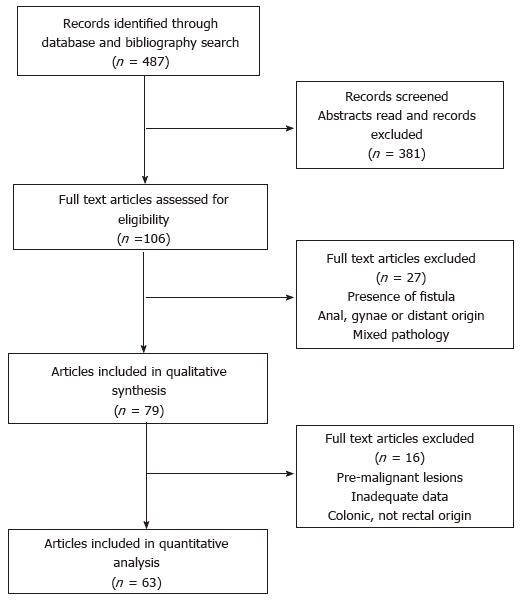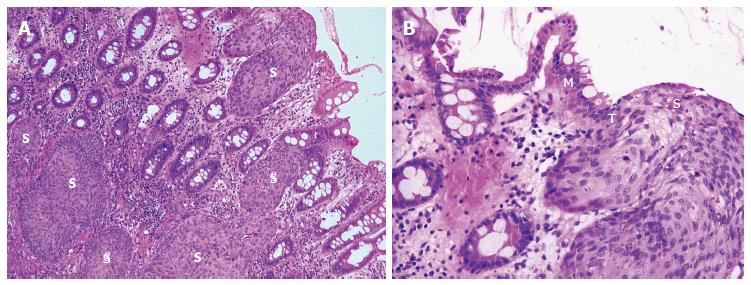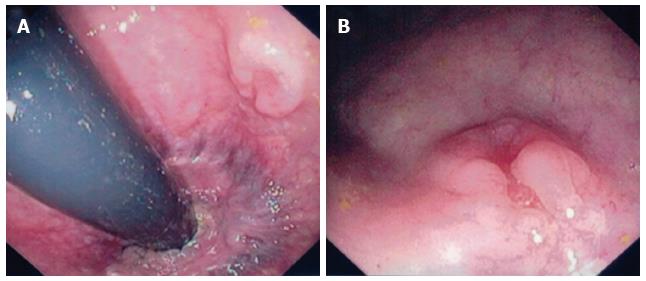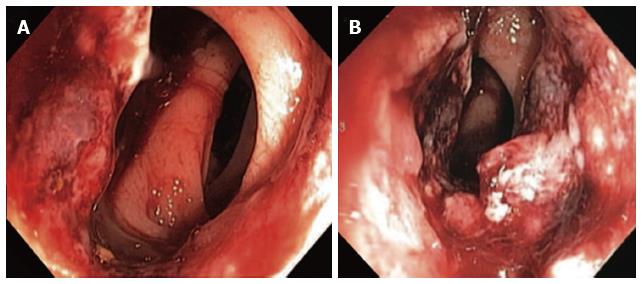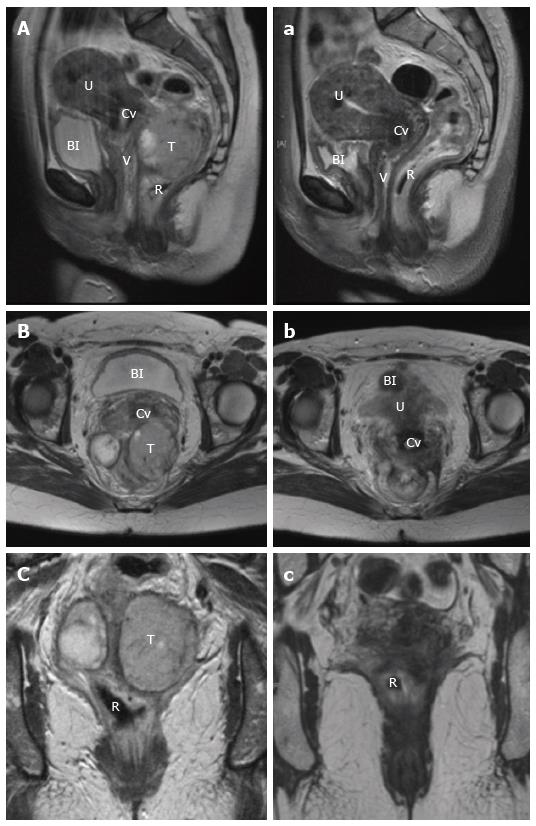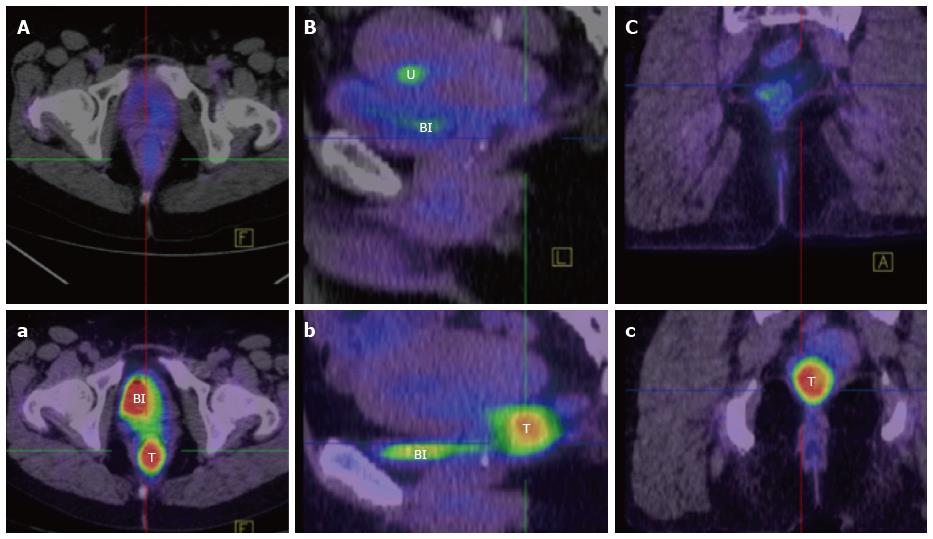Copyright
©The Author(s) 2016.
World J Gastrointest Surg. Mar 27, 2016; 8(3): 252-265
Published online Mar 27, 2016. doi: 10.4240/wjgs.v8.i3.252
Published online Mar 27, 2016. doi: 10.4240/wjgs.v8.i3.252
Figure 1 Preferred reporting items for Systematic Reviews and Meta-Analyses flow diagram.
Figure 2 Haematoxylin and eosin stain of rectal squamous cell carcinoma in situ.
This demonstrates architectural distortion, marked nuclear hyperchromatism and pleomorphism, along with full thickness basal layer expansion and no surface maturation. There is no evidence of invasion through the basement membrane (BM) (Image courtesy of Associate Professor Ken Opeskin, Department of Pathology, St Vincent’s Hospital, Melbourne).
Figure 3 Haematoxylin and eosin stain of rectal squamous cell carcinoma.
A: Widespread invasive squamous cell carcinoma (S) throughout the mucosa and submucosa of the rectal wall; B: Demonstration of the clear transition (T) between normal rectal mucosa (M) and invasive squamous cell carcinoma (S).
Figure 4 Endoscopic appearance of an early rectal squamous cell carcinoma.
Rectal SCC presenting as a flat polypoid lesion with a central ulcerated depression in the distal rectum, 6 cm from the anal verge. A: Endoscopic retroflexed view; B: Endoscopic end-on view. SCC: Squamous cell carcinoma.
Figure 5 Endoscopic appearance of an advanced rectal squamous cell carcinoma.
Large near circumferential rectal SCC with areas of necrosis and friability lying 3 cm above the anorectal ring. A and B: Endoscopic end-on view. SCC: Squamous cell carcinoma.
Figure 6 Magnetic resonance imaging appearance of rectal squamous cell carcinoma.
Pre (A, B, C) and post (a, b, c) treatment T2 magnetic resonance imaging in sagittal (A, a), axial (B, b) and coronal (C, c) planes of a large rectal SCC, demonstrating an excellent response. T: Tumour; U: Uterus; V: Vagina; Cv: Cervix; Bl: Bladder; R: Rectum; SCC: Squamous cell carcinoma.
Figure 7 Positron emission tomography/computed tomography appearance of rectal squamous cell carcinoma.
Pre (a, b, c) and post (A, B, C) treatment fused FDG-PET/CT imaging in axial (A, a), sagittal (B, b) and coronal (C, c) planes of a rectal SCC (T), demonstrating a complete metabolic response. [FDG is also visibly concentrated anteriorly in the bladder (Bl) in images a, B, b, and in the endometrium (U) in image B (menstruation)]. FDG: Fluorodeoxyglucose; CT: Computed tomography; PET: Positron emission tomography; SCC: Squamous cell carcinoma.
- Citation: Guerra GR, Kong CH, Warrier SK, Lynch AC, Heriot AG, Ngan SY. Primary squamous cell carcinoma of the rectum: An update and implications for treatment. World J Gastrointest Surg 2016; 8(3): 252-265
- URL: https://www.wjgnet.com/1948-9366/full/v8/i3/252.htm
- DOI: https://dx.doi.org/10.4240/wjgs.v8.i3.252









